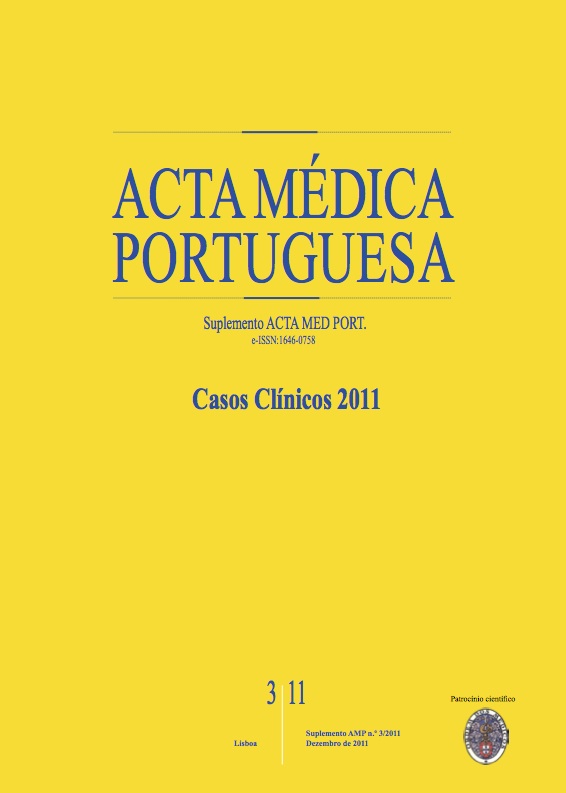Cryptorchidism in adolescence.
DOI:
https://doi.org/10.20344/amp.1532Abstract
An early investigation and management op cryptorchidism are essential for the diagnosis of associated pathologies, because intra-abdominal testis are associated with infertility and neoplasic risk. The authors describe a case of late presentation of cryptorchidism associated with genetic disorder.Adolescent male with 17 years old, referred to Adolescent Clinic for short stature and bilateral cryptorchidism. Hypertension, short stature and bilateral cryptorchidism were detected in clinical evaluation. Bone age is coincident with chronological age and testosterone was slightly below normal values. The study of secondary hypertension was negative. He underwent bilateral orchidopexy, and histological analysis revealed severe bilateral testicular atrophy. The karyotype showed 45,X[15]/46,X,+mar.ish der(Y)(SRY+)[117] mosaicism.With this case report the authors intend to enhance the need of early management of cryptorchidism and short stature, in order to improve the prognosis.Downloads
Downloads
How to Cite
Issue
Section
License
All the articles published in the AMP are open access and comply with the requirements of funding agencies or academic institutions. The AMP is governed by the terms of the Creative Commons ‘Attribution – Non-Commercial Use - (CC-BY-NC)’ license, regarding the use by third parties.
It is the author’s responsibility to obtain approval for the reproduction of figures, tables, etc. from other publications.
Upon acceptance of an article for publication, the authors will be asked to complete the ICMJE “Copyright Liability and Copyright Sharing Statement “(http://www.actamedicaportuguesa.com/info/AMP-NormasPublicacao.pdf) and the “Declaration of Potential Conflicts of Interest” (http:// www.icmje.org/conflicts-of-interest). An e-mail will be sent to the corresponding author to acknowledge receipt of the manuscript.
After publication, the authors are authorised to make their articles available in repositories of their institutions of origin, as long as they always mention where they were published and according to the Creative Commons license.









